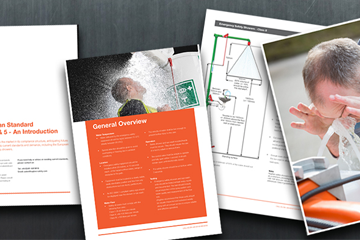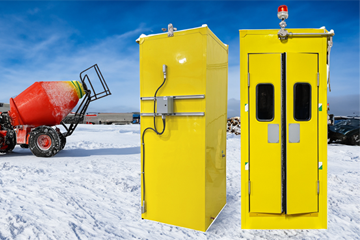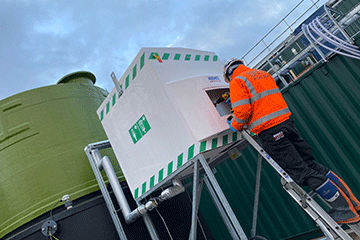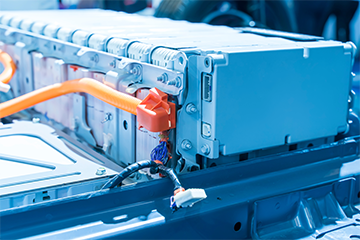Enquiry List () (0)
- Nov 17, 2017

Emergency Safety Shower and Eye Wash Stations, are yours ANSI Compliant?
Dangers exist in all workplaces and industries. Despite safety precautions, exposure to potential workplace hazards such as chemical splash, welding sparks, metal shavings or fine particulates can occur. Emergency safety shower stations and face/eye washes help protect workers from hazards.
Having an ANSI approved, emergency safety shower station onsite is vital to meeting the requirements of International and European standards. Recognized worldwide, the American National ANSI Z358.1-2014 standard is the most comprehensive. It provides minimum requirements for design, installation, maintenance and inspection of emergency safety shower stations and emergency eye wash stations. Some critical elements of the ANSI standard include:
ANSI Approved Location for Safety Shower Station
The first few seconds after a hazardous chemical splash are critical. The longer the substance remains on the skin, the more damage occurs. In order to be ANSI approved, the Emergency safety shower station must be within 10 seconds reach from where an incident occurs. Workers should not have to move to a different level to reach the safety shower because it is dangerous and takes too much time.
In case eyesight is affected, keep the path to the emergency shower and eye wash station unobstructed. In order to maintain the ANSI approval, the safety shower and eye wash station should be in a prominent position, clearly visible and well-lit.
ANSI Approved Flow Rate for Emergency Safety Shower Stations
Emergency shower stations must provide a flow of at least 20 US gallons (76 liters) of potable water per minute for 15 minutes. This allows enough time to remove contaminated clothing and rinse any chemical residue.
Emergency eye wash stations must deliver at least 3 US gallons (11.4 liters) per minute for 15 minutes. This ensures a thorough decontamination.
ANSI Approved Operational Requirements
Emergency safety shower stations must be accessible and easy-to-operate, even with impaired vision. Safety showers and eye wash valves should be designed so the flushing flow remains on without the use of the operator’s hands. The control valve must go from ‘off’ to ‘on’ in one second or less.
ANSI Approved Temperature Requirements
Emergency safety shower and eye wash stations must deliver tepid water in the range of 60-100 ˚F (16-38 ˚C). Temperatures that exceed this range can scald the injured person and cause a higher rate of chemical absorption by the skin. Lower temperatures can lead to hypothermia or thermal shock. The affected person is less likely to remove their contaminated clothing in cold water, thus prolonging exposure to the chemical substance.
The ANSI approved temperature requirements also acknowledge the natural human behavior to step out of the safety shower when the temperature is uncomfortable. This reduces the rinsing effectiveness and increases the chance of injury due to hazardous chemical burns.
Applicable Standards
ANSI/ISEA Z358.1-2014 American National Standard for Emergency Eye wash and Shower Stations
Find Out More
Confused about ANSI? We can help! Click here to download our free tech guide to the ANSI standard.
Contact Us
Contact Hughes Safety Showers to receive a complimentary quote. Our professional consultants can advise on the best solution for your application.












